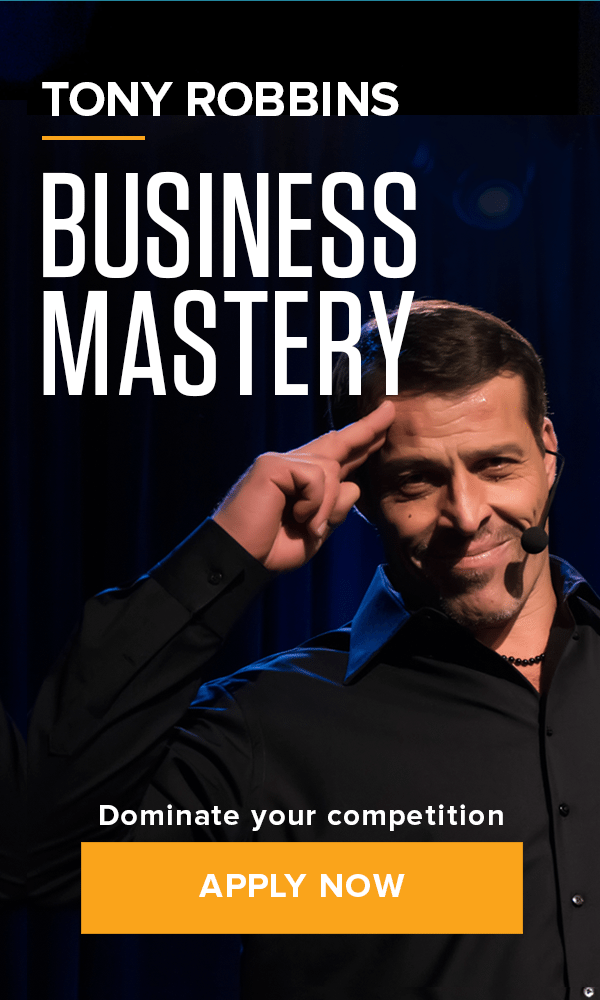Team Tony cultivates, curates and shares Tony Robbins’ stories and core principles, to help others achieve an extraordinary life.
Risk Redefined: How to Mitigate Uncertainty in New Business Ventures
How to Hedge Your Bets When Starting a New Business
This article was written for the Tony Robbins blog by Raegan Moya-Jones, founder of aden + anais, and is inspired by content contained in her new book, What it Takes: How I Built a $100 Million Business Against the Odds.
One of the most common tropes of the successful entrepreneur is that you must quit your job to show dedication and have the time and energy to build a business. Aside from the fact that this is clearly not true based on my experience building aden + anais, a baby goods company that went on to become a $100 million dollar global brand, some of the most famous entrepreneurs in the world kept their jobs until their start-ups were evolved enough to become much safer bets. Even Steve Wozniak of Apple, Pierre Omidyar of eBay, and Phil Knight of Nike, practiced hybrid entrepreneurship.
I’m going to go out on a limb here and suggest that when it comes to entrepreneurs, an aversion to risk might not be the problem.
On the contrary, it’s the myth of entrepreneur as risk-taker that has the potential to do far more damage – whether by deterring women (and men!) from starting businesses because they don’t fit the stereotype, or by discouraging potential investors because they wrongly perceive caution, discretion, and risk aversion to be negative traits.
Perhaps we should consider what risk-taking means in the first place. What one person deems risky – based on a million little factors, from the size of their bank account to their place in the social order – another might view as harmless. Some of us think starting a business is inherently risky and that finding and keeping a full-time job is the safe bet. However, counting on your employer to be the sole provider of your income is a huge risk. Most people don’t understand that they can be fired at any time, or the company could fold – they falsely believe they have security. Starting a business might be enormously risky for someone with $200,000 worth of student loan debt (and no guarantee of immediate income), but for someone like me, who had income in the form of a full-time job to fall back on, it wasn’t particularly risky at all.
It would make much more sense for aspiring entrepreneurs to identify the specific risks they face and then determine how best to mitigate them.
As a new mother – someone for whom childcare was both indispensable and an enormous expense – the single biggest risk I faced in launching aden + anais, outside of the drain on my time, was financial. I knew next to nothing about the science of risk back then; indeed, I presumed (wrongly, it turns out) that entrepreneurs were more often daredevils. True, it was a risk to put in $30,000 for the initial order of inventory for our foundational product, muslin baby blankets. The orders that followed, however, were not risky to me – they were logical. Demand was through the roof and we couldn’t keep product on the shelves. Any risk that existed, in my eyes, was only the risk of slowing down, of not filling those orders fast enough.
Likewise, spending my free time on a side hustle was not a risk. Yes, I had limited time given that I had a job and a growing family, but it was a greater risk not to act on an idea that could eventually provide financial freedom for my family. In my eyes, depending on my employer for a paycheck to support my family for the rest of my life was the greatest risk of all, because it was based on the false idea that employment is safer.
But what I most wanted – aside from the opportunity to be my own boss and define my own future – was a chance to prove to myself that I could do this. Keeping my job was just a way of mitigating the risks. More than that, it alleviated virtually all of the pressure I might otherwise have put on myself to be successful: I had not put my family in financial jeopardy by quitting my job. I had not invested more than we could afford to lose. It allowed me to (as I like to say) make peace with potential failure, which means that I really, truly internalized the notion that it was OK to fail. It was much more important to me to try and fail, in fact, than to sit back, wait ten years, and watch somebody else find success exploiting the very same idea that I’d had.
To me, the risk was greater in not trying, in not taking a chance on something that would help me free myself from my dependence on a paycheck written by someone else. Even if the whole thing went up in flames, I’d be able to walk away knowing I’d given it my best shot.
About Raegan Moya-Jones
Raegan Moya-Jones is the co-founder and President of Saint Luna, a premium moonshine company, and the founder and former CEO of aden + anais, an award-winning lifestyle brand for babies and children. She is the winner of the EY Entrepreneur of the Year award and a board member of Hopeland, a charity dedicated to making sure all children have a family.




